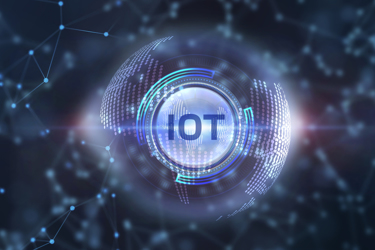IoT And The Cloud: Q&A With Semtech
A conversation with Karthik Ranjan, Senior Director, LoRa Cloud Solutions & Ecosystem Development, Semtech.

Q: How is the cloud being used for asset tracking?
Ranjan: A variety of industries such as transportation, logistics, retail, agriculture, healthcare, and food services are turning to the Cloud to replace inefficient processes with asset management solutions. Combining the Cloud with geolocation technologies means devices automatically locate, track and monitor physical assets such as equipment, product, vehicles, and people. For example, large equipment manufacturers can leverage tracking devices and the Cloud to monitor where goods – like machine parts– are located throughout a plant, which can dramatically improve workflow and increase productivity. Another example in agriculture is when farmers are leveraging similar technology to monitor the location of livestock that can be spread across many acres of land. Considering a recent research report found that the global asset tracking market will reach $55.1 billion by 2026, the Cloud will continue to play a significant role in this growth.
Q: What is the importance of geolocation for the IoT?
Ranjan: Being able to locate end devices is a much-needed feature when it comes to the Internet of Things (IoT). Understanding where highly valued assets are on location or in transit – like expensive construction equipment on a job site or temperature-monitored vaccines being shipped across the country – is incredibly important. There are many benefits, such as loss prevention and increasing job efficiency by automating manual processes. Combining geolocation with the Cloud means companies have access to important data that they can transform into insights and quickly. For example, the farmer mentioned above could identify herd patterns and make decisions on the well-being of their cattle.
Q: What are the biggest challenges when it comes to providing geolocation services?
Ranjan: Traditional GPS technologies offer location technologies but operating them at scale for IoT specifically can be expensive and prohibitive for several reasons. The biggest challenges in adopting this technology across industries include:
- Power: Assets that are being tracked can be anywhere, including some pretty hard-to-reach areas like a gas rig. Conventional GPS trackers are typically power hungry, meaning batteries need to be replaced several times per year. This can be costly, timely, and nearly impossible in many situations.
- Installation: When deploying IoT, it is easy to make mistakes. Manual registration processes for sensors opens the door to human error. Additionally, trackers may be moved from one location to the next without logs being manually updated.
- Expensive: The frequency of device location readings will fluctuate based on the use case – from day-to-day to minute-by-minute. Increasing frequency for a traditional tracker can significantly impact battery usage and network connectivity costs, and therefore investment and maintenance costs.
As an alternative, Semtech’s LoRa Cloud™ Geolocation is a simple cloud API that can be easily integrated with a LoRaWAN network and application server to enable location estimation via any device that uses LoRaWAN. Not only does this significantly simplify the management of endpoint solutions, but the geolocation services can reduce power consumption by 10x compared to conventional technologies.
Q: Can you provide an example of a company leveraging the cloud in a positive way for asset tracking/logistics?
Ranjan: Digital Matter is a leading supplier of GPS, and IoT hardware and device management software. The company leveraged the LoRa Edge™ (LR1110) asset management platform to develop Yabby Edge, an innovative battery-powered tracking device for indoor/outdoor asset management. The Yabby Edge features advanced Cloud-based location calculations, significantly reducing power consumption and extending battery life for up to 12 years. The technology significantly reduces the cost and complexity of IoT asset management in a variety of customer applications such as pallet and warehouse equipment tracking, inventory and shipment management, trolley, cart and container tracking, medical equipment management, and more.
Q: What should users keep in mind when it comes to security?
Ranjan: Data breaches are becoming all too common nowadays. Security should always be a top priority for any asset management solution. With LoRa Edge, devices come pre-provisioned with keys inside the chip ensuring that private keys never leave the device. It also means that OEMs and end customers can avoid the need to organize key injection and, at the factory level, enabling just-in-time provisioning to happen when the device actually gets deployed in the field.
Q: What is the future of Cloud and geolocation for the IoT?
Ranjan: During the next decade, 500 billion devices are expected to connect to the internet as organizations continue to shift toward a more IoT-focused business strategy. The majority of those IoT devices require some form of localization capability either at point of install or through the assets life. The Cloud will play a critical role in connecting these devices and providing precise location management.
Semtech, the Semtech logo, and LoRaWAN and are registered trademarks or service marks, and LoRa Cloud and LoRa Edge are trademarks or service marks, of Semtech Corporation or its affiliates.
